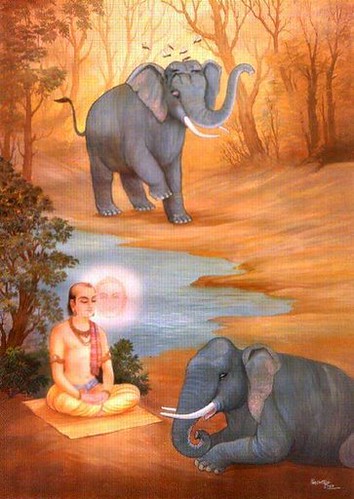Please read a more recent post about this here.
The Jain concept of Samvar is about stopping the inflow karmas.
Thinking of taking the action to stop the inflow of karmas.
Samvar means blocking of inflow of karmas. One must think of the tremendous benefits of each Samvar like Samiti, Gupti, Yati-dharma etc. One must carry out these activities to reduce the inflow of karma.
Stoppage of influx of karma.
Under this reflection, one thinks about stopping evil thoughts, and becomes absorbed in achieving spiritual knowledge and meditation. This prevents the influx of karma.
~~~~~~~~~~~~~~
This concept is part of the 12 Bhavnas (Reflections or Thoughts). Some people believe that there are 16 Bhavnas. The following explains what the Bhavnas are. (Taken from http://www.fas.harvard.edu/~pluralsm/affiliates/jainism/jainedu/12bhavna.htm)
Jain religion puts a significant emphasis on the thought process of a human being. A person’s behavior and his actions are the reflection of his internal thoughts, day in and day out. It is not the action but intention behind the action results in the accumulation of Karma. Hence, one should be very careful about his thoughts, how he thinks, and the subject matter of his thought.
To make room for pure thoughts, and to drive out the evil ones, Jainism recommends to reflect or meditate the following twelve thoughts or Bhavnas.
The twelve Bhavnas described here are the subject matters of one’s meditation, and how to occupy one’s mind with useful, religious, beneficial, peaceful, harmless, spiritually advancing, karma preventing thoughts. They cover a wide field of teachings of Jainism. They are designed to serve as aids to spiritual progress, produce detachment, and lead the aspirants from the realm of desire to the path of renunciation. They are reflections upon the fundamental facts of life, intended to develop purity of thought and sincerity in the practice of religion.
The reflections are also called Anuprekshas, longings, thoughts, aspirations, or Bhavnas.
Pravin K. Shah
Jain Study Center of North Carolina
